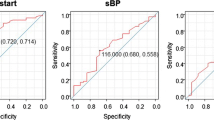Abstract
Prolongation of the QT interval is clinically important because it may be associated with torsade de pointes, a potentially fatal arrhythmia. The objective of this study was to define the effects on electrocardiogram (ECG) of intravenous conivaptan, the first arginine vasopressin V1A/V2-receptor antagonist indicated for the treatment of euvolemic hyponatremia, on hospitalized patients without congestive heart failure. After a placebo run-in period, participants in this randomized, single-blind, placebo- and positive-controlled, parallel-group study received an intravenous 20-mg loading dose of conivaptan (day 1), followed by a 40-mg/d continuous infusion (days 1–4); a 20-mg loading dose of conivaptan (day 1), followed by an 80-mg/d continuous infusion (days 1–4); or moxifloxacin 400 mg (positive control) or placebo from day 1 to day 4. The primary ECG endpoint was QTc interval duration, which was determined by the individually corrected QT interval for each subset; secondary endpoints included QT intervals corrected with Bazett’s formula and Fridericia’s formula. No clinically notable changes in ECG parameters were associated with conivaptan, suggesting that conivaptan did not affect cardiac repolarization or cardiac conduction.
Similar content being viewed by others
References
Al-Khatib SM, LaPointe NMA, Kramer JM, Califf RM. What clinicians should know about the QT interval.JAMA. 2003; 289: 2120–2127.
Morganroth J. A definitive or thorough phase I QT ECG trial as a requirement for drug safety assessment.J Electrocardiol. 2004; 37: 25–29.
ICH Steering Committee. ICH Harmonised Tripartite Guideline: the Clinical Evaluation of QT/QTc Interval Prolongation and Proarrhythmic Potential for Non-Antiarrhythmic Drugs E14. Presented at the May 12, 2005 meeting of the International Conference on Harmonisation of Technical Requirements for Registration of Pharmaceuticals for Human Use. Available online at: http://www.ich.org/LOB/media/MEDIA1476.pdf. Accessed February 14, 2006.
Decaux G. Long-term treatment of patients with inappropriate secretion of antidiuretic hormone by the vasopressin receptor antagonist conivaptan, urea, or furosemide.Am J Med. 2001; 110: 582–584.
Abraham WT, Suresh DP, Wagoner LE, Haas GJ, Nelson C, Bakker-Arkeme RG. Pharmacotherapy for hyponatremia in heart failure: effects of a new dual V1A/V2 vasopressin antagonist YM087 [abstract].Circulation. 1999; 100(suppl): I-299. Abstract 1562.
Bichet DG, Madore F, Cusson J, et al. Pharmacotherapy for hyponatremia in SIADH: effects of a new orally administered dual V1A/V2 vasopressin receptor antagonist YM087 [abstract].J Am Soc Nephrol. 1999; 10: 119A. Abstract A0613.
Verbalis JG, Bisaha JG, Smith N. Novel vasopressin V1A and V2 antagonist conivaptan increases serum sodium concentration and effective water clearance in hyponatremia [abstract]. JAm Soc Nephrol. 2004; 15: 356A. Abstract SA-P0254.
Ghali JK, Koren MJ, Taylor JR, et al. Efficacy and safety of oral conivaptan: a V1A/V2 vasopressinreceptor antagonist assessed in a randomized, placebo-controlled trial in patients with euvolemic or hypervolemic hyponatremia.J Clin Endocrinol Metab. 2006; 91: 2145–2152.
Vaprisol (conivaptan hydrochloride injection) product information. Deerfield, Ill: Astellas Pharma US, Inc.; 2006.
Bazett HC. An analysis of time relations of electrocardiograms.Heart. 1920; 7: 353–370.
Fridericia LS. The duration of systole in an electrocardiogram in normal humans and in patients with heart disease [in German].Acta Med Scand. 1920; 53: 469–486.
Avelox (moxifloxacin hydrochloride) product information. West Haven, Conn: Bayer Pharmaceuticals Corporation; 2004.
DePonti F, Poluzzi E, Cavalli A, Recanatini M, Montanaro N. Safety of non-antiarrhythmic drugs that prolong the QT interval or induce torsade de pointes: an overview.Drug Saf. 2002; 25: 263–286.
Roden DM. Drug-induced prolongation of the QT interval.N Engl J Med. 2004; 350: 1013–1022.
Priori SG, Schwartz PJ, Napolitano C, et al. Risk stratification in the long-QT syndrome.N Engl J Med. 2003; 348: 1866–1874.
Author information
Authors and Affiliations
Corresponding author
Rights and permissions
About this article
Cite this article
Lasseter, K.C., Dilzer, S.C. & Smith, N. Intravenous conivaptan: Effects on the QTc interval and other electrocardiographic parameters in healthy volunteers. Adv Therapy 24, 310–318 (2007). https://doi.org/10.1007/BF02849899
Issue Date:
DOI: https://doi.org/10.1007/BF02849899




